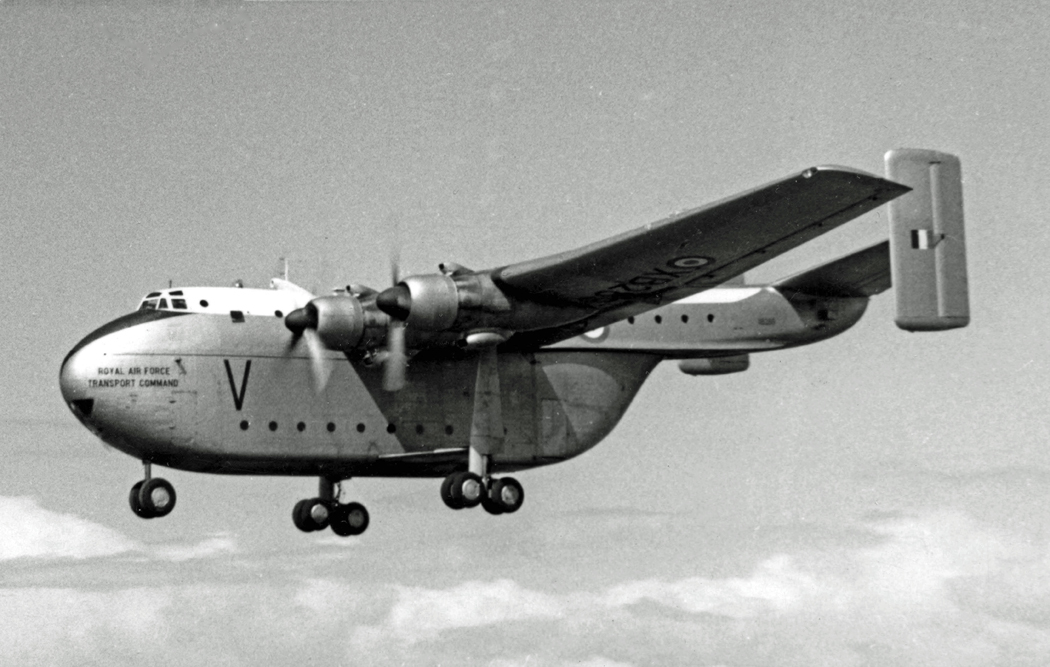|
Inacio posted:Hot drat that's a nice view Gotta be SFO.
|
|
|
|

|
| # ? May 25, 2024 03:10 |
|
thetechnoloser posted:Gotta be SFO. Yup. Just saw this take off: 
|
|
|
|
Hydrofoils went with trubines for weight reasons. They're ~very~ light for the installed power. But they're also "more or less" spec engines now. IIRC there's an intake limiter which does a very good job at ensuring they make a given horsepower. I don't think there's such restrictions on running an allison. However you take a huge weight penalty. As for them being aeronautical insantiy... there's two pedals on the floor, one is for the flap on the front wing, the other is the gas pedal. "aerodynamic controls"... I call that a plane. :-)
|
|
|
|
Dammit, now I'm tempted to buy the realistic plane icons for FlightRadar. I do wish, though, that living in the DC area it'd show military aircraft, with the exception of HMX-1 helos and Ospreys.
|
|
|
|
I got closer
|
|
|
|
BIG HEADLINE posted:I do wish, though, that living in the DC area it'd show military aircraft, with the exception of HMX-1 helos and Ospreys. Joke's on you! Most of our stuff doesn't have ADS-B/Enhanced Mode S yet because we're waiting until the 11th hour deadline because we're the US Military and that's how we roll.
|
|
|
|
This is a good read on the Auto-GCAS system recently featured in the F-16 G-lock video, written when the system was in testing. http://www.f-16.net/f-16_versions_article8.htmlquote:A USAF, Lockheed Martin, NASA and Swedish air force Advanced Fighter Technology Integration (AFTI) team completed flight tests of an automatic ground collision-avoidance system or Auto-GCAS on an upgraded USAF Block 25 F-16D in the fall of 1998. In 29 flights, the team conducted more than 350 test maneuvers - such as diving at the ground and the side of mountains - to fulfill two key objectives of the program:
|
|
|
|
The never ending march of technology. In 1998 this took a large joint-government research program to implement with an advanced fighter. In 2016 it happens on a $100 piece of hardware: https://www.youtube.com/watch?v=QCQ8OG3xbHE
|
|
|
|
Vitamin J posted:The never ending march of technology. In 1998 this took a large joint-government research program to implement with an advanced fighter. They call it a jet but it's got a prop. 
|
|
|
|
Vitamin J posted:The never ending march of technology. In 1998 this took a large joint-government research program to implement with an advanced fighter. That's pretty awesome, though of course one has to keep in mind that things become a LOT simpler when a failure costs hundreds or thousands rather than millions plus possibly lives. I'm sure R/C planes can pull significantly more extreme maneuvers than their real life counterparts as well for the standard strength scaling reasons, so the system probably doesn't have to be as concerned with breaking things by pulling up too hard. I'll also bet that it doesn't factor for terrain and just assumes that the ground in the entire flight area is level with wherever it took off from. Still freaking cool that it basically gives R/C pilots an "oh poo poo" button where the computer will do it's best to level itself out and aim back towards them. That might actually be what I need to get in to R/C planes, the idea of likely wrecking a few while learning always made me lean back towards cars.
|
|
|
|
Dead Jedi posted:I often see these afterburner shots and they have these non-continuous, ghosted flame effects. Mach diamonds? Mach diamonds.       They're standing waves in the exhaust stream, and are characteristic of the engine geometry, not the power setting. In the SR-71 image you can see how they can be distorted by airflow, like the rest of the exhaust stream, but in clean air they are usually static regardless of power level. Here's a real nice video of that in a rocket engine: https://www.youtube.com/watch?v=CjoY_cSmQ70 You can see how the diamonds are basically fixed in space, and as the engine shuts down they get fainter, but they don't move significantly backwards or forwards.
|
|
|
|
wolrah posted:That's pretty awesome, though of course one has to keep in mind that things become a LOT simpler when a failure costs hundreds or thousands rather than millions plus possibly lives. I'm sure R/C planes can pull significantly more extreme maneuvers than their real life counterparts as well for the standard strength scaling reasons, so the system probably doesn't have to be as concerned with breaking things by pulling up too hard. I'll also bet that it doesn't factor for terrain and just assumes that the ground in the entire flight area is level with wherever it took off from. Modern foamies are becoming asymptotic with indestructibity.
|
|
|
|
http://i.imgur.com/fLqex0e.gifv Gripen down https://www.youtube.com/watch?v=8yf_QTbDeWM
|
|
|
|
drunkill posted:http://i.imgur.com/fLqex0e.gifv God drat, you can actually feel the sadness of the pilot there. That slow walk towards the crash site... 
|
|
|
|
I'm just glad it was an RC replica and not a real Gripen, so the pilot was safely on the ground the whole time and could actually walk to the crash site.
|
|
|
|
TBF any Brazilian with that much money to throw around probably built their stack on a pile of corpses
|
|
|
|
I will now file this under NOPE https://www.youtube.com/watch?v=PAdCt6qgj9k
|
|
|
|
mlmp08 posted:I will now file this under NOPE And that led me to this: https://www.youtube.com/watch?v=KLgR3Ipo-Ng
|
|
|
|
shame on an IGA posted:TBF any Brazilian with that much money to throw around probably built their stack on a pile of corpses yeah its absolutely inconceivable that a brazilian has a regular 9-5 job to finance their hobbies lmao good joke though my dude
|
|
|
|
Inacio posted:yeah its absolutely inconceivable that a brazilian has a regular 9-5 job to finance their hobbies I have a good paying software dev job in the US and I can't afford RC stuff like that, so you'll have to excuse those of us that know it's an expensive hobby and can safely presume that that guy is very well off for a Brazilian if he has stuff like that.
|
|
|
|
almost as funny as calling someone playing with a toy a pilot
|
|
|
|
It's a bit of a leap to go from "has disposable income" to "built on a stack of corpses." I mean for all you know his parents might have been Nazis on the run and his fortune is built on stolen Jewish gold.
|
|
|
|
CommieGIR posted:And that led me to this: Microjets are pretty badass as cruise missile surrogates in military exercises. I talked to a pilot who said he had "only" had to jump out of one twice. Once he was at altitude ferrying the aircraft and the other time he was at treetop level simulating a cruise missile, but basically going max speed, so was able to nose up and basically jump off of it when it was drat near standing still in the air.
|
|
|
|
CommieGIR posted:And that led me to this: Was about to mention the CriCri when I noticed it's in the post you replied to. Tinyass planes are really cool for some reason.
|
|
|
|
mlmp08 posted:Microjets are pretty badass as cruise missile surrogates in military exercises. I talked to a pilot who said he had "only" had to jump out of one twice. Once he was at altitude ferrying the aircraft and the other time he was at treetop level simulating a cruise missile, but basically going max speed, so was able to nose up and basically jump off of it when it was drat near standing still in the air. I still remember the opening from Octopussy with the BD-5. Can't believe I missed this article: http://foxtrotalpha.jalopnik.com/james-bonds-micro-jet-lives-on-as-a-pretend-cruise-miss-1613344267 BIG HEADLINE fucked around with this message at 21:08 on Sep 18, 2016 |
|
|
|
BIG HEADLINE posted:I still remember the opening from Octopussy with the BD-5. That's very cool. I remember seeing the Coors Light BD-5s at airshows and being amazed by how tiny they were. The roll past the crowd was great especially.
|
|
|
|

|
|
|
|
Something something your mother
|
|
|
|
The bombadier position under the nose always makes me think they've got a second cockpit down there for when they want to fly inverted. *edit* After reading the SMART-1 story and watching the James Bond clip I noticed a different piece of Aero Insanity sitting in front of the hanger.  Yes, those are windows up in the tail booms. Acording to wiki there's even bathrooms and hatches for paratroopers in there. Ardeem fucked around with this message at 22:45 on Sep 18, 2016 |
|
|
|
Not pictured: aircraft is 6 miles past the end of the runway it departed from and still climbing.
|
|
|
|
Ardeem posted:The bombadier position under the nose always makes me think they've got a second cockpit down there for when they want to fly inverted. It's like somebody saw a C-119 and said "embiggen it!" What is it?
|
|
|
|
Nebakenezzer posted:It's like somebody saw a C-119 and said "embiggen it!" I believe it's called the Blackburn Beverley.
|
|
|
|
One of my 'bucket list' items is to fly in an Il-76 (with plenty of ear protection) so I could look out the navigator's window up front. There are shockingly few images of perspectives from that angle on Google Image Search.  https://www.youtube.com/watch?v=UEeXBnOE9qI (warning, kind of loud) BIG HEADLINE fucked around with this message at 01:16 on Sep 19, 2016 |
|
|
|
BIG HEADLINE posted:One of my 'bucket list' items is to fly in an Il-76 (with plenty of ear protection) so I could look out the navigator's window up front. There are shockingly few images of perspectives from that angle on Google Image Search. If you like the IL-76 and haven't read Outlaws Inc then you need to.
|
|
|
|
St_Ides posted:If you like the IL-76 and haven't read Outlaws Inc then you need to. Well, to be fair, part of the reason it's a 'bucket list' item is because there's shockingly higher chance of dying while flying in an Il-76 compared to a plane that wasn't built more with quotas in mind over build quality.
|
|
|
|
BIG HEADLINE posted:Well, to be fair, part of the reason it's a 'bucket list' item is because there's shockingly higher chance of dying while flying in an Il-76 compared to a plane that wasn't built more with quotas in mind over build quality. I'm not sure how much of it is that, and how much of it is the fact that Il-76s these days tend to get flown into very interesting places by very interesting people.
|
|
|
|
StandardVC10 posted:I'm not sure how much of it is that, and how much of it is the fact that Il-76s these days tend to get flown into very interesting places by very interesting people. A very fair point.
|
|
|
|
I spent the weekend at the Reno air races, which was pretty cool. Over the course of three days, four airplanes ended up being severely damaged (a Vampire landed in the desert after an engine failure Friday, a sport racer had an engine fire Saturday, and two biplanes hit each other on the runway Sunday) with zero injuries, and the racing was pretty good. The biplane, Formula 1, T-6, jet and sport classes had some extremely close racing all weekend, and the final T-6 race ended with the first two airplanes finishing under 1/10 of a second apart. All of those classes had several good battles for position through the weekend, with a lot of passing and some pretty impressive comebacks as well. Probably biggest disappointment was the unlimited class. The unlimited winner was effectively decided a couple of months ago when it was announced that Voodoo was the only real contender that was going to show up (the rest of the field was a highly modified Yak-11, and four Sea Furies that ranged from heavily modified to bone stock) and the race results bore that out. Voodoo turned the first lap of the unlimited final at 495mph, and once it was obvious that there was no real competition (the second place airplane was probably 8 seconds back after lap 1) the subsequent laps were much slower, with the last lap being somewhere around 450mph. I don't think there was a single pass in the unlimiteds the three days I was there, but getting to see a P-51 doing almost 500mph as well as a Sea Fury still running the original sleeve valve engine (even though it was nowhere close to being competitive) was pretty cool. I have a couple thousand pictures to sort through, so I'll try and post some here when I get home tomorrow.
|
|
|
|
I was there last year (or was it 2 now?). Did the AF have a good demo? F22s where there when I was there.
|
|
|
|

|
| # ? May 25, 2024 03:10 |
|
Friday had a couple of flybys from a pair of F-35's as well as a pair of F-4's (which were probably the last ones the Phantom will ever do) before they landed to become static displays, but the only other military flying was the Blue Angels and the USAF parachute team that jumped in for the opening ceremony every day.
azflyboy fucked around with this message at 14:29 on Sep 19, 2016 |
|
|




































